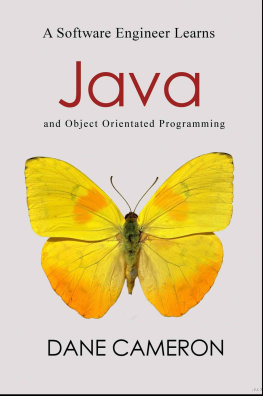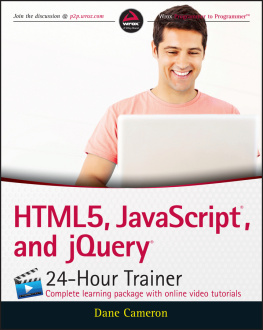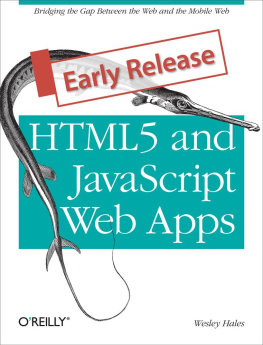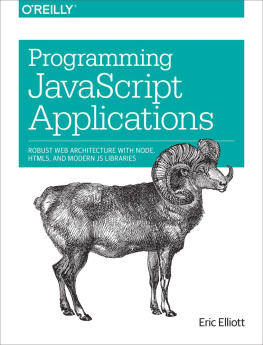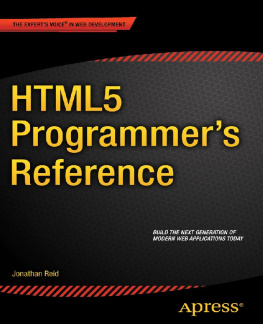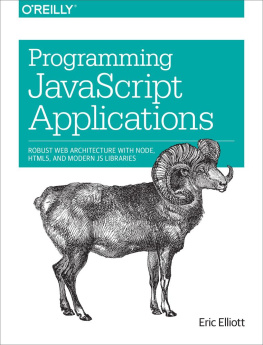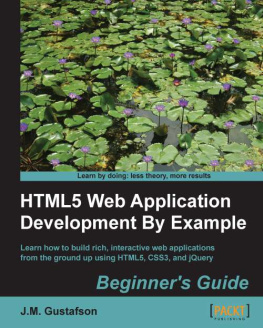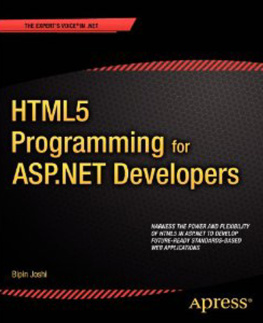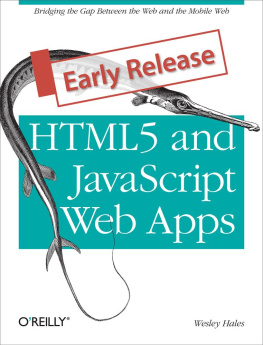Dane Cameron - A Software Engineer Learns HTML5, JavaScript and jQuery: A guide to standards-based web applications
Here you can read online Dane Cameron - A Software Engineer Learns HTML5, JavaScript and jQuery: A guide to standards-based web applications full text of the book (entire story) in english for free. Download pdf and epub, get meaning, cover and reviews about this ebook. year: 2013, publisher: Cisdal Publishing, genre: Computer. Description of the work, (preface) as well as reviews are available. Best literature library LitArk.com created for fans of good reading and offers a wide selection of genres:
Romance novel
Science fiction
Adventure
Detective
Science
History
Home and family
Prose
Art
Politics
Computer
Non-fiction
Religion
Business
Children
Humor
Choose a favorite category and find really read worthwhile books. Enjoy immersion in the world of imagination, feel the emotions of the characters or learn something new for yourself, make an fascinating discovery.

- Book:A Software Engineer Learns HTML5, JavaScript and jQuery: A guide to standards-based web applications
- Author:
- Publisher:Cisdal Publishing
- Genre:
- Year:2013
- Rating:3 / 5
- Favourites:Add to favourites
- Your mark:
A Software Engineer Learns HTML5, JavaScript and jQuery: A guide to standards-based web applications: summary, description and annotation
We offer to read an annotation, description, summary or preface (depends on what the author of the book "A Software Engineer Learns HTML5, JavaScript and jQuery: A guide to standards-based web applications" wrote himself). If you haven't found the necessary information about the book — write in the comments, we will try to find it.
- Browsers have introduced new standards-based APIs allowing web applications to (amongst other things) store data offline, retrieve data from the server dynamically, spawn background processes and interact with the filesystem.
- Software engineers and programmers have begun to think of the much maligned JavaScript language in a new light, and unlock its potential as a rich and expressive language capable of producing large scale, well-structured applications.
- The jQuery library has eased the pain of interacting with Document Object Model, and therefore writing applications that dynamically respond to user interaction.
- The HTML markup language has been overhauled and extended to provide more semantic meaning, and many additional elements and attributes.
- An introduction to the HTML5 markup language, and how it differs from HTML4 and XHTML.
- An introduction to JavaScript, including an in-depth look at its use of objects and functions, along with the design patterns that support the development of robust web applications.
- An introduction to jQuery selection, traversal, manipulation and events.
- An in-depth look at the Web storage and IndexedDB APIs for client side data storage.
- A guide to implementing offline web applications with the Application Cache API.
- An introduction to the ways JavaScript can interact with the users file-system using the FileReader API.
- A guide to the use of Web Workers in web applications.
- An introduction to AJAX, and the jQuery API supporting AJAX.
- An introduction to Server Sent Events and Web Sockets.
Dane Cameron: author's other books
Who wrote A Software Engineer Learns HTML5, JavaScript and jQuery: A guide to standards-based web applications? Find out the surname, the name of the author of the book and a list of all author's works by series.

